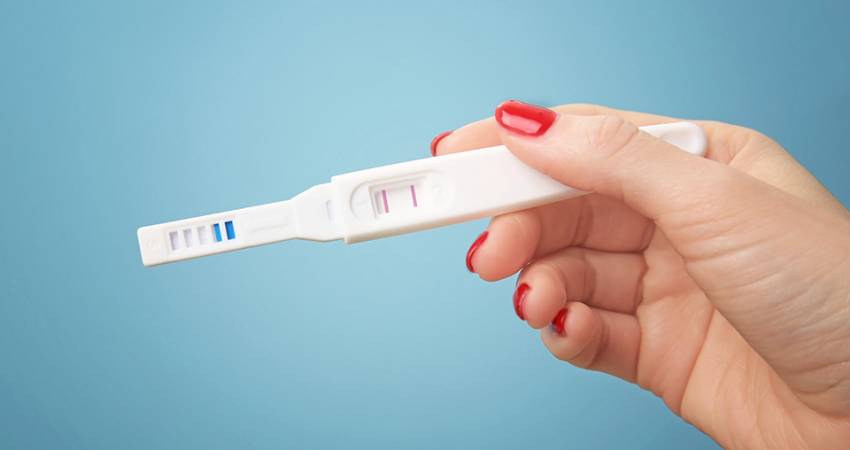
Abortion supporters are still wrong about the three-day reflection period
This article explains how, despite efforts to argue otherwise, there is strong evidence that the three-day reflection period in our abortion legislation actually does reduce the number of abortions.
The data used in this article – estimating 10,000 initial consultations and 8,000 abortions per year, and therefore 2,000 women who do not return for abortion after the first consultation - are likely underestimates of the current position.
A recent response to a parliamentary question from Carol Nolan TD indicated that there were actually more than 12,000 initial abortion consultations, and more than 10,000 abortions, in 2023. There appear to be some inaccuracies, however, in the data provided to Deputy Nolan, and these need to be sorted out before updating the figures here.
In any event, it should be obvious that, with either set of figures, there is a gap of about 2000 between initial consultations and actual abortions in recent years, and that the abortion advocates are unable to fully account for this discrepancy.
Background
The State does not collect information on how many women change their minds about abortion each year. It does collect annual data on
- payments to abortion providers
- the number of abortions carried out
In round figures:
- The State now pays for about 10,000 initial abortion consultations a year
- About 8000 abortions a year are now carried out
- About 2000 women a year, therefore, do not proceed with an abortion in the State.
Abortion advocates assert that none or very few of these 2000 cases are women changing their minds.
Their reasons for this assertion are now presented, and rebutted where appropriate.
Reason 1: The appropriate figure for initial appointments is not really 10,000, because some women book in with more than one abortion provider and are counted more than once in the payment figures.
Reply: If this has happened at all, it must surely be a rare occurrence. In any event, surely it can be easily checked by the HSE, since each application for payment from the abortion provider includes the woman’s PPS number?
Reason 2: Some of the 10,000 initial payments are for women found to be outside the 12-week gestational limit at the initial consultation, and therefore ineligible for abortion under Irish law.
Reply: In the START study of 2019 (based on 475 subjects) it was reported that 1.1% of women fell into this category. The IFPA report for 2019, however, claimed that nearly 5% of their clients were outside the 12-week limit. Averaging these data gives an estimated 3% of women exceeding 12 weeks. Applying this 3% to the 10,000 annual initial consultations yields an estimate of 300 women nationally, and the 10,000 figure should be reduced by this amount. The 2000 discrepancy (between abortions and initial payments) would then become 1700.
Reason 3: Some of the women who failed to return after the initial appointment may have had miscarriages, and the figures should be adjusted for this.
Reply: The 2019 START study reported that 2.3% of their subjects miscarried after the initial appointment. Applying 2.3% to 10,000 initial appointments nationally yields an estimate of 230 miscarriages per year. Having already adjusted the original figure of 2000 down to 1700 for women exceeding 12 weeks gestation, it should now be reduced further to 1470 to allow for miscarriages.
Reason 4: Women presenting for an initial consultation, between 9 and 12 weeks’ gestation, have to be referred to hospital, and the GP does not receive the usual second payment in these cases. The 10,000 figure needs to be adjusted for this.
Reply: This point was made very forcibly by a witness at the Oireachtas Health Committee in October, but she was quite incorrect in her assertion. The initial figure of 2000 above was not calculated by subtracting the number of final GP payments from the number of initial GP payments, it was calculated by subtracting the number of abortions from the number of initial payments. There is no need, under this heading, therefore, to further adjust the current estimate of 1470.
Reason 5: Some of the women who made an initial appointment may then have obtained an abortion abroad. It may be incorrect to classify them as not proceeding with an abortion.
Reply: The number of Irish women obtaining abortions abroad has dropped very substantially since 2018. In 2019, for example, it was just 375. A big majority of these are women outside the 12-week limit, and these have already been accounted for in the calculations. Nevertheless, applying a downward adjustment of 70 under this heading, which is probably an over-adjustment, brings the estimated discrepancy down to 1400, 600 less than the opening estimate.
Reason 6: There is no data available specifically on the number of Irish women changing their minds about abortion. Calculations based on payment data are, therefore, based on assumptions rather than data.
Reply: This point, too, was made at the October Oireachtas hearing. It is not strictly correct: the IFPA specifically reported 11 of their clients in 2021 (more than 2%) proceeded with their pregnancies, and 12 others did not present for a second abortion appointment. If IFPA is aware that some of their clients continue with their pregnancies, then the same surely applies to 400+ other abortion providers. It would have been a simple matter to survey these providers e.g by email, as part of the Abortion Review, but this was not done. What the Abortion Review has done, in effect, is use this paucity of data about continuing pregnancies to arrive at the conclusion that no such cases exist, but that position is simply not sustainable when the unexplained excess of initial abortion appointments over completed abortions currently stands at about 1400 per year.
Conclusion
This analysis started with a figure of 2000 for the excess of initial appointments over actual abortions each year, and adjusted this down to 1400 based mainly on available data for miscarriages, and for numbers exceeding the 12-week gestational limit. Other arguments for reducing the estimate further were dismissed, because these arguments seemed spurious.
Pro-life people maintain, very sensibly, that these 1400 are mainly women who changed their minds about abortion, and that the three-day reflection period facilitates this.
The reflection period does its job, in short, and should remain in the legislation. It is actually very difficult to see how anyone, looking at the figures, would argue otherwise.
Jim Stack
This article was first published on Gript and is printed her with permission
Photo credit: Africa Studio / Shutterstock
Featured
- Campaign to stop EU funding out of state abortions - tell your EU commissioner to vote NO
- Judge recuses himself from case of woman praying in censorship zones for “apparent bias”
- I’m a Celebrity star criticises “sad” UK law that aborts babies with Down Syndrome up to birth
- British actress speaks out on “serious risk” assisted suicide bill has for those with eating disorders
- Caplan’s “Tragic Hysteria of Abortion” discusses the flaws with mainstream Turnaway Study interpretations
- Backlash as Scotland report proposes legalising sex-selective abortion up to birth
- Canada hits new record as 1 in 20 deaths a result of Euthanasia
- Ben Scallan defends pro-life on TV show Dinner with the Enemy
- Influencers share the loss of their beloved unborn baby
- Dublin woman with cancer says unborn child was sent to save her
- Mother and baby doing well after surgery for mother’s cancer during pregnancy
- Josiah: Abortion Survivor
- Loving the Unborn
- Rally for Life 2025
- Don't assist Suicide 2024


























